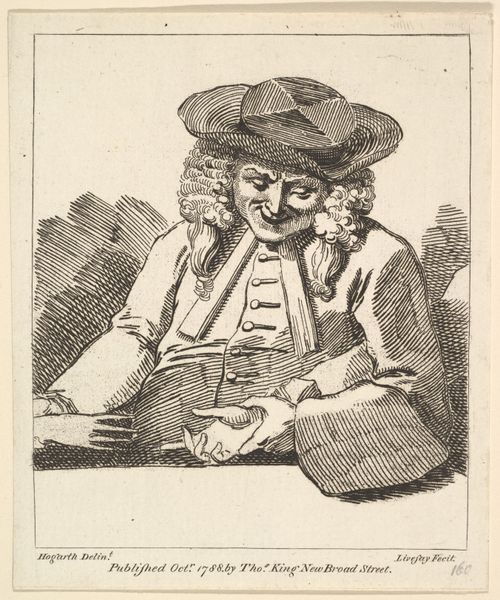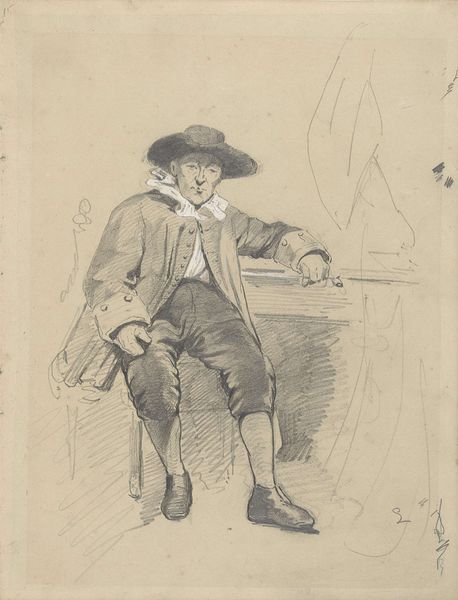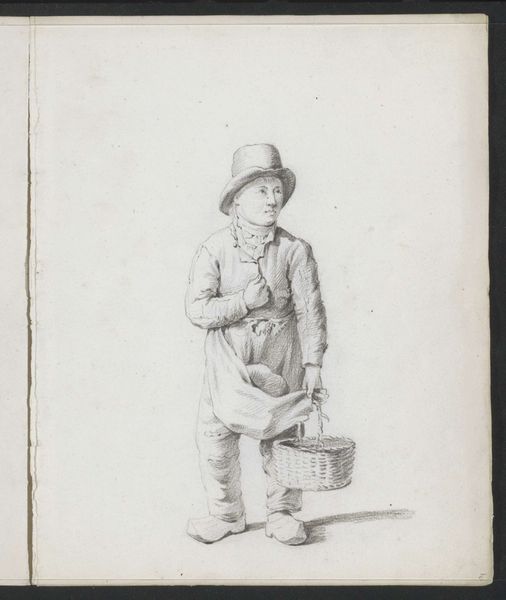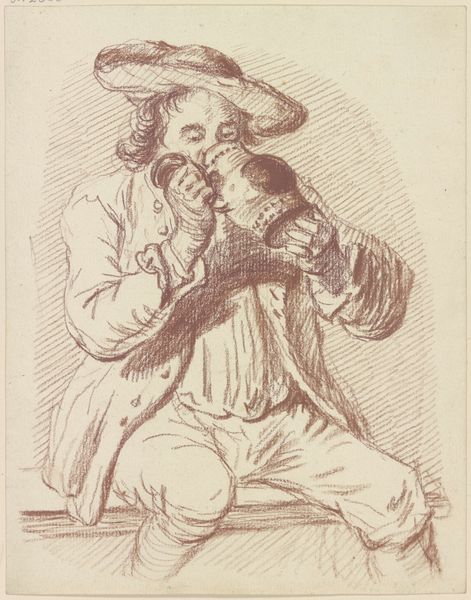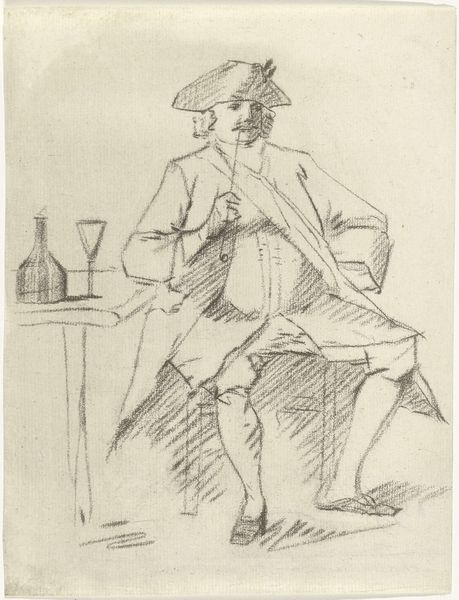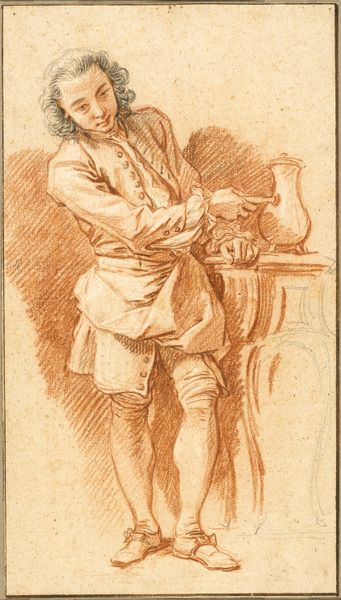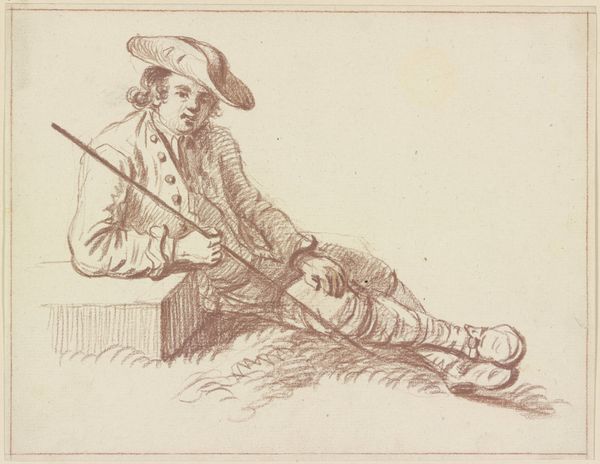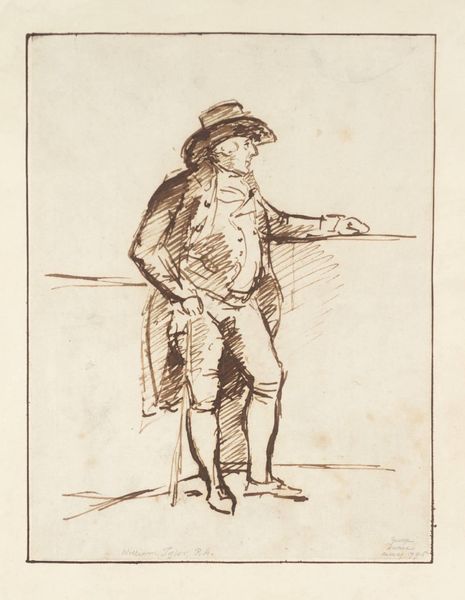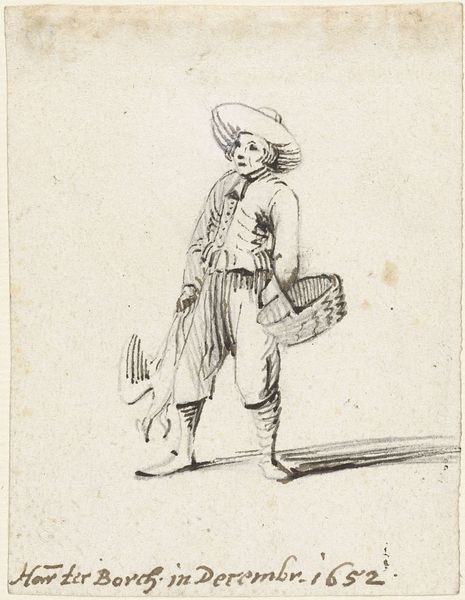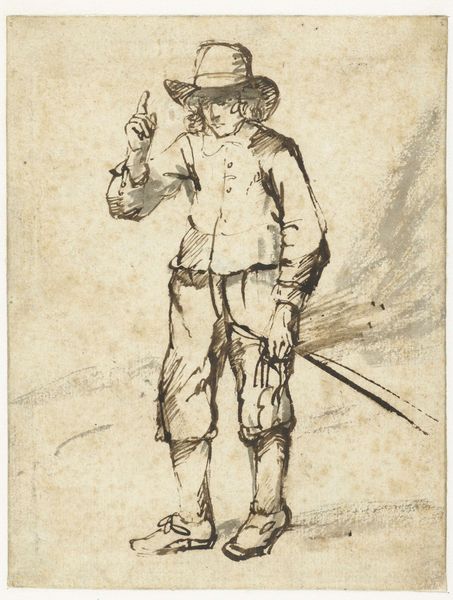
drawing, red-chalk, pencil
#
portrait
#
drawing
#
red-chalk
#
pencil sketch
#
pencil
#
15_18th-century
#
genre-painting
Copyright: Public Domain
Curator: Here we have a drawing from the Städel Museum collection titled "Man Seated Beside a Table with a Pitcher" by Friedrich Wilhelm Hirt. It is rendered in red chalk and pencil, placing it sometime during the 18th century. My first impression is a scene of someone enjoying a simple pleasure, capturing a moment of repose. Editor: Absolutely, there is an immediate casual air about it. I notice how the subject's slouch, casual grip on the pitcher, and crossed legs suggests someone completely at ease. But is this merely an unaffected observation, or does it echo social disparities that might be invisible at first glance? Curator: The pitcher is certainly a prominent feature. Consider the symbolism of vessels throughout history and art. Water or wine jugs are often linked to concepts of abundance, sharing, and ritual. Is Hirt's inclusion of the jug a symbolic offering to the viewer, or something much more personal? The slightly off-center placement directs focus toward the hand holding it. Editor: Right, and perhaps we should note *who* gets to relax with a pitcher. While ostensibly a genre scene, we need to acknowledge the political implications around accessibility, who labors versus who enjoys leisure, and how even seemingly straightforward pictures uphold a certain social structure. Is he a working man on break, or is he part of the privileged class? Curator: An intriguing thought, yes! The figure’s attire indicates that he may well come from a higher standing in life than the everyday rural man, but Hirt might not be making any judgement, merely recording what he witnesses with candor. Maybe the intention is about capturing and conveying feelings of enjoyment through easily comprehensible imagery. The drawing method creates an intimate relationship with the persona in this very instant in his day, even making us long to join him. Editor: I'd counter that art rarely exists in a vacuum. This work is of its era, carrying with it both its intentional choices *and* unconscious biases. The “common man” in art also carries heavy assumptions relating to labour, authenticity, and virtue. Even in a seemingly harmless picture like this, we might reflect on how these portrayals contributed towards historical biases. Curator: Indeed. It invites the question of whether such observations are being conveyed here by Hirt deliberately and/or with social criticism in mind. Food for thought on how cultural symbolism merges with a historical and sociopolitical landscape to build up layers of interpretations. Editor: A perfect demonstration of how historical context influences how we see, think and perceive art even centuries later. It calls on us not just to acknowledge the aesthetic elements, but to place it thoughtfully in history, not afraid to pose the more challenging questions about this "simple" subject’s life.
Comments
No comments
Be the first to comment and join the conversation on the ultimate creative platform.
